At West Catholic, we are old school. And by that I mean, OLD SCHOOL. The school was built in 1927 when it was Girl’s High and nothing has changed much since then. Consequently, all the classrooms have blackboards, which means chalk, which means chalk dust, which is an eye irritant to the nth degree.
Keratoconus eyes are particularly susceptible to dry eye symptoms caused by irritants because the irregular surface of the cornea disrupts the normal distribution of tears. On most days, the eye pain–a sort of pin-prickly sensation–appears around noon and I need my trusty bottle of eye drops to get through the day.
.
Blackboards have been hailed as one of the most revolutionary educational tools ever invented. Beginning in ancient Babylon, students used individual clay tablets for their lessons. At the end of the 18th century, students in Europe and America carried pieces of slate or painted wood for their notes and written work (Resilient Educator). While slates cut down on the use of expensive paper, they did not allow for a community of thought, nor could all students see any visuals during a lesson.
The solution to the situation was really pretty simple: a larger version of what students carried. In 1801, James Pillans of Edinburgh Old High School hung a piece of slate on his classroom wall to teach Geography. In America, George Baron of the West Point Military Academy affixed a piece of wood painted black on his own wall. And, thus, the blackboard was born. Slate was expensive, so schools invested in a lot of black paint!
Whiteboards and Smartboards are now common in classrooms, but blackboards still have their uses. The lack of resistance on a whiteboard often makes it difficult to write on. As for me, while I have recently been given a used SmartBoard, my double vision makes it challenging for me to see just what I am writing. My blackboard still has its uses.
I used the blackboard to tell my students about my husband’s death. It was the “elephant in the room” that might cause me sudden tears.
My creative students have found their own uses for the two blackboards in my room! The artists used it for holiday work.
And other students used the boards to write notes to me.
This one is, of course, my favorite.
The blackboards have been an important part of Room 108 and I will carry their messages with me. But my eyes will be grateful for a chalkless environment.
What changes in technology did you see in your work that you found useful or not? Did you ever long for the “good old days”?

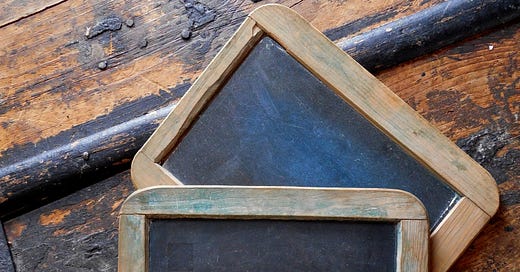



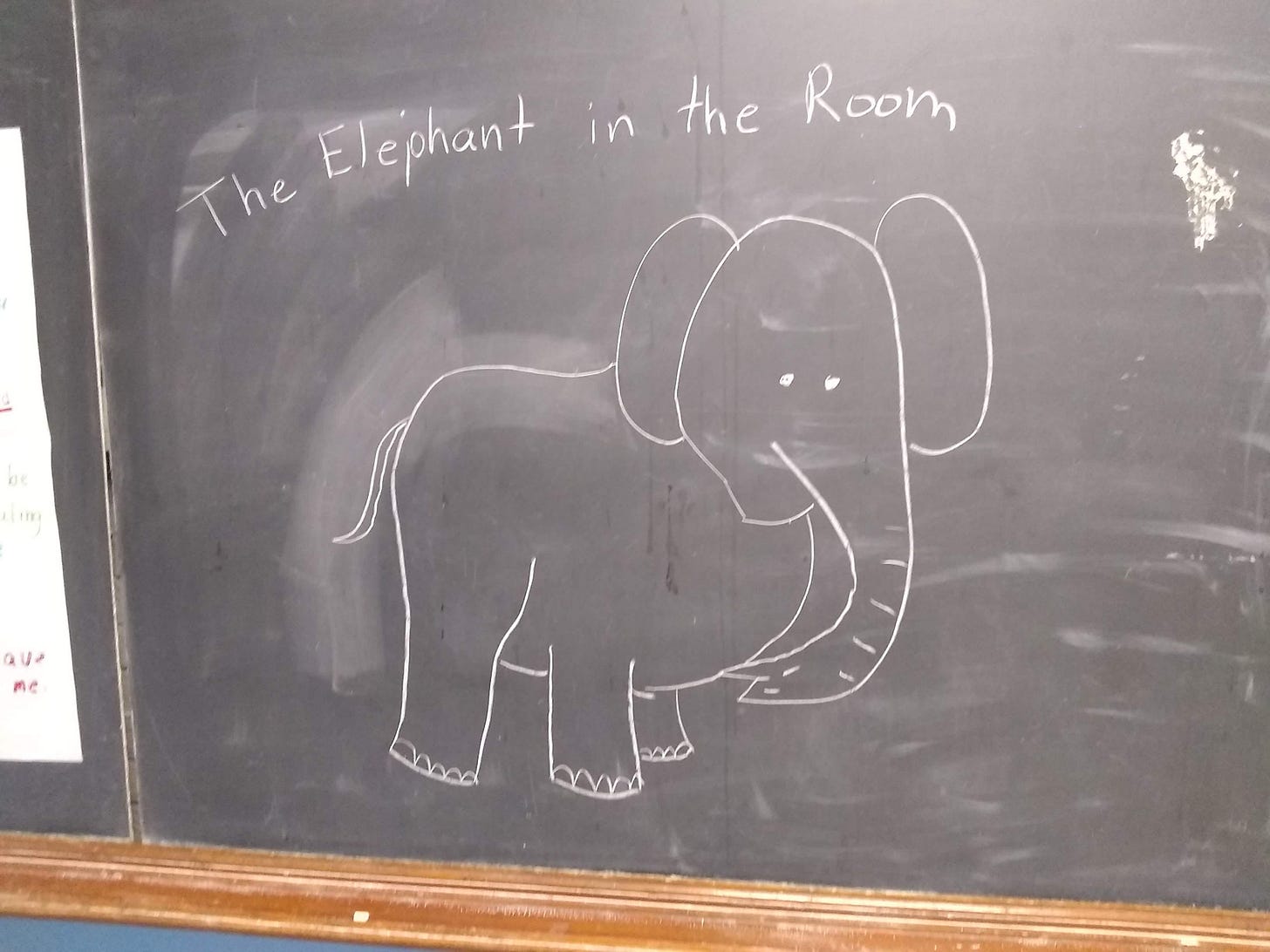
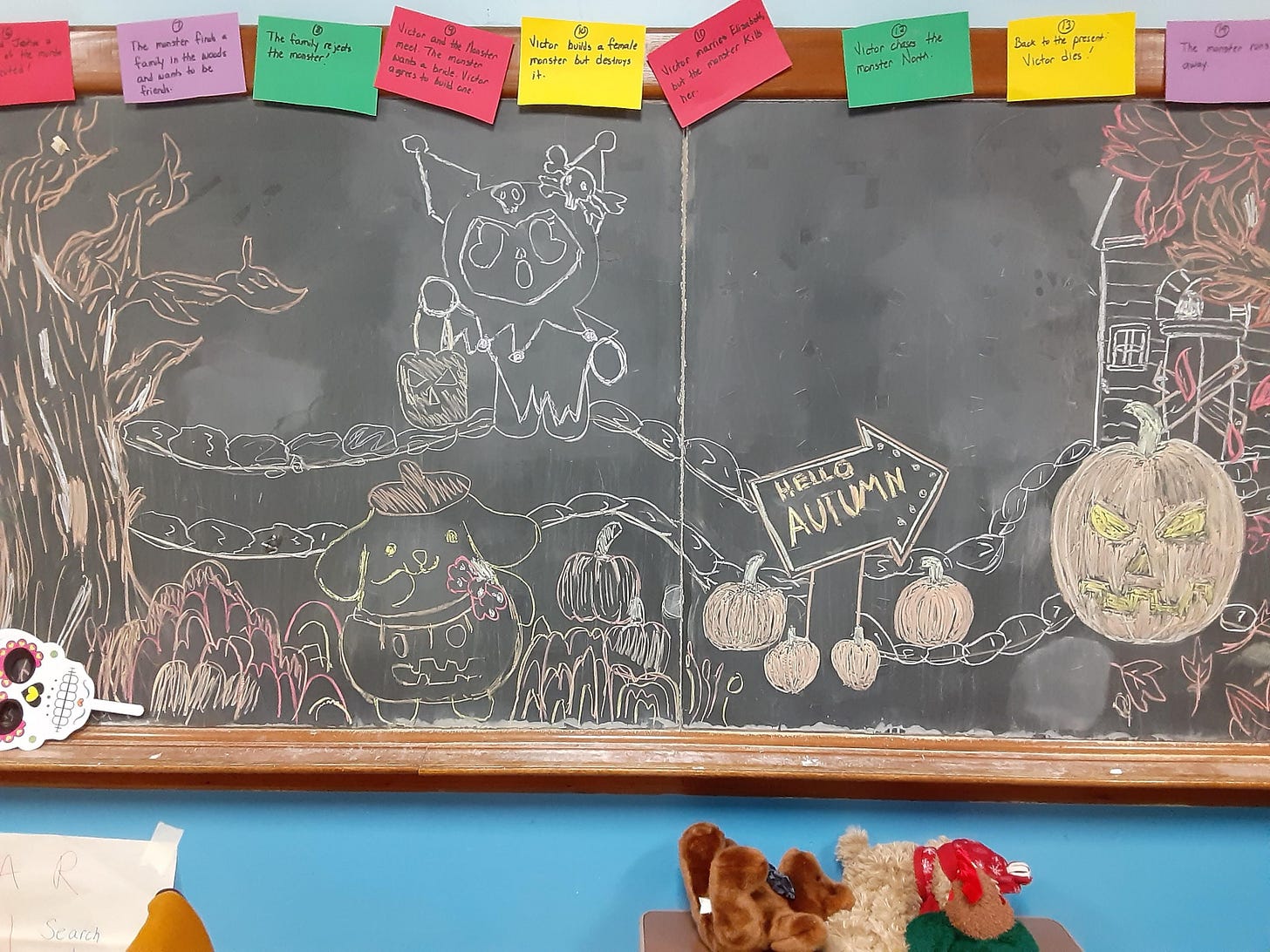
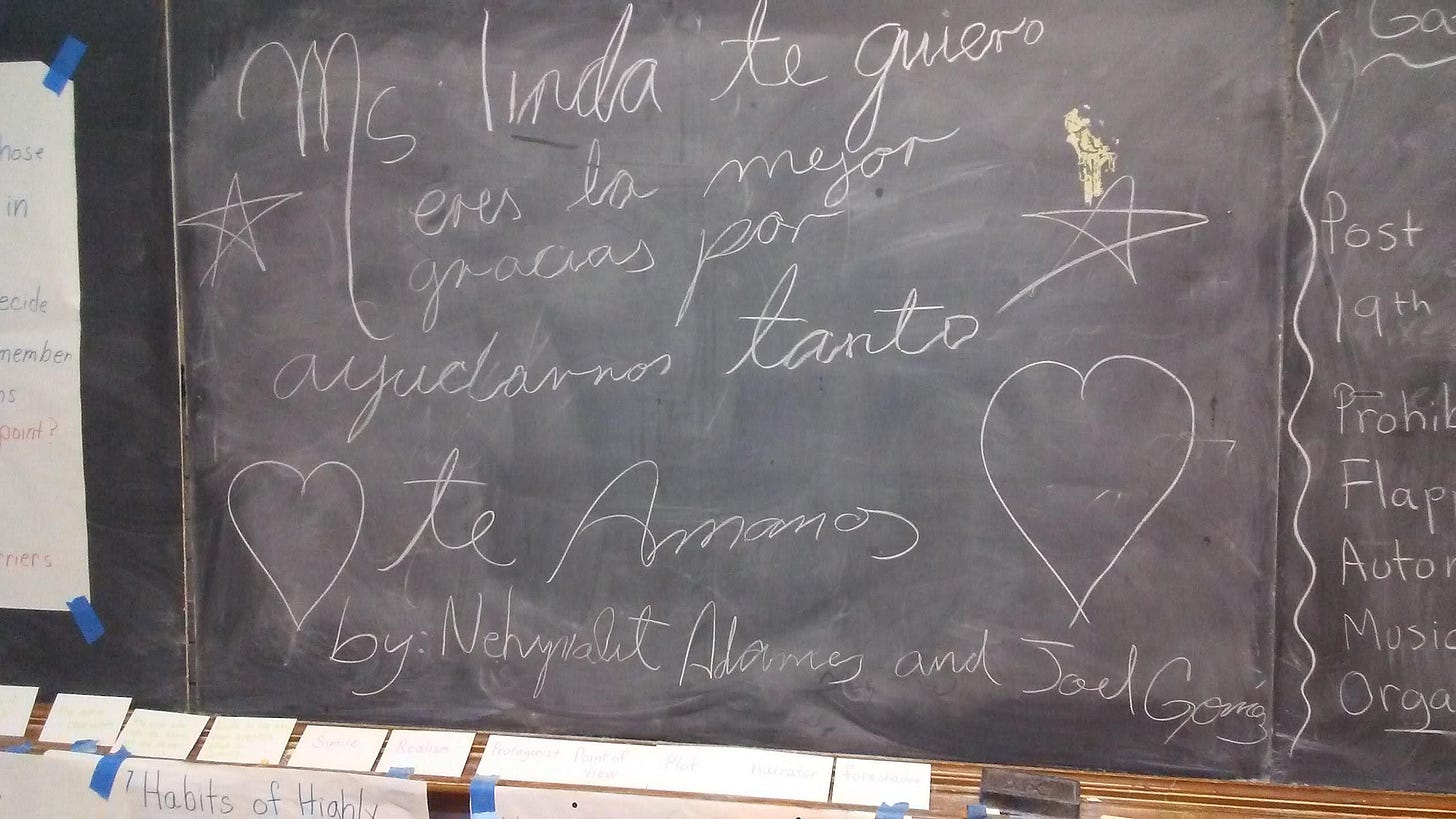
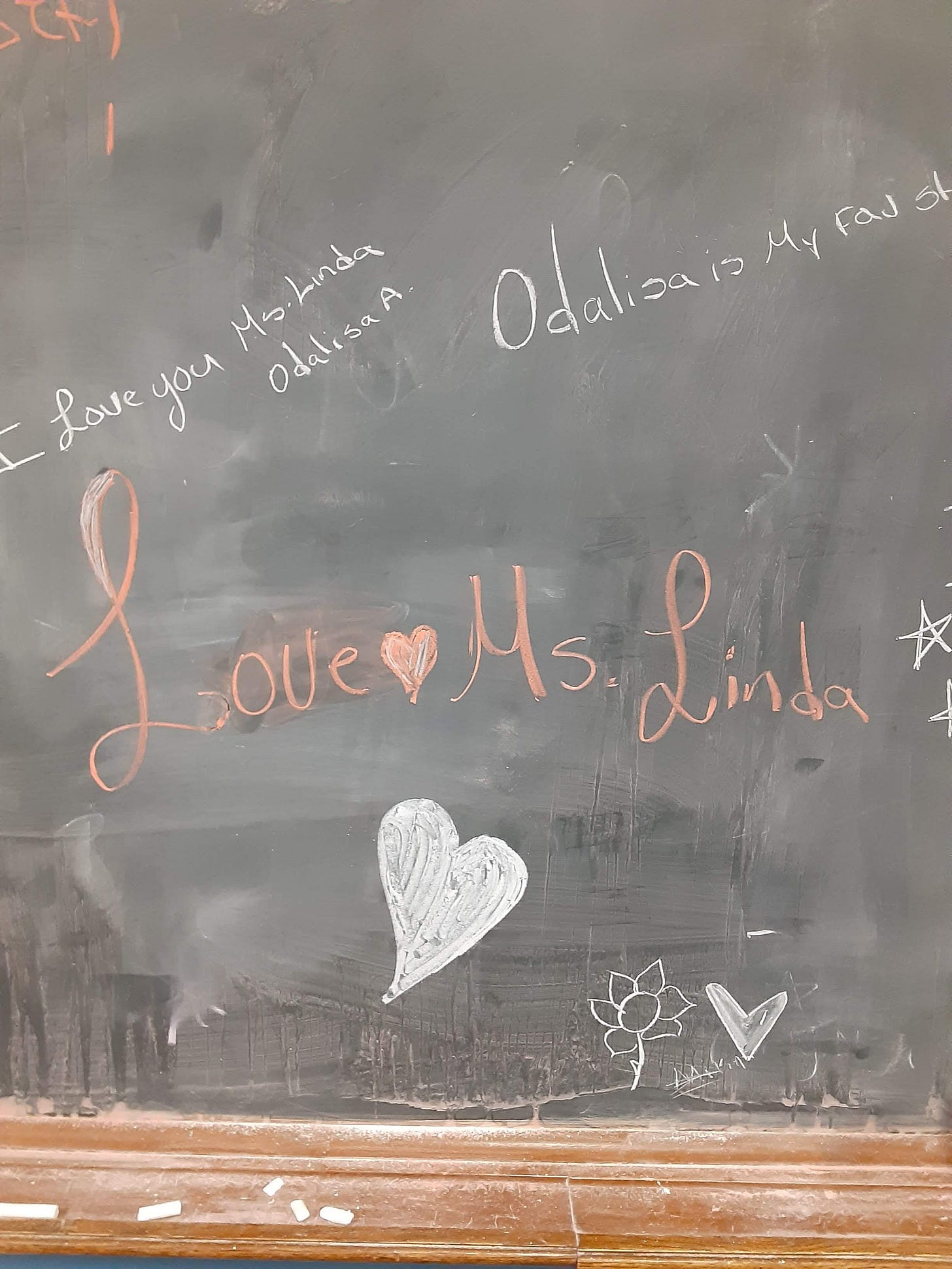
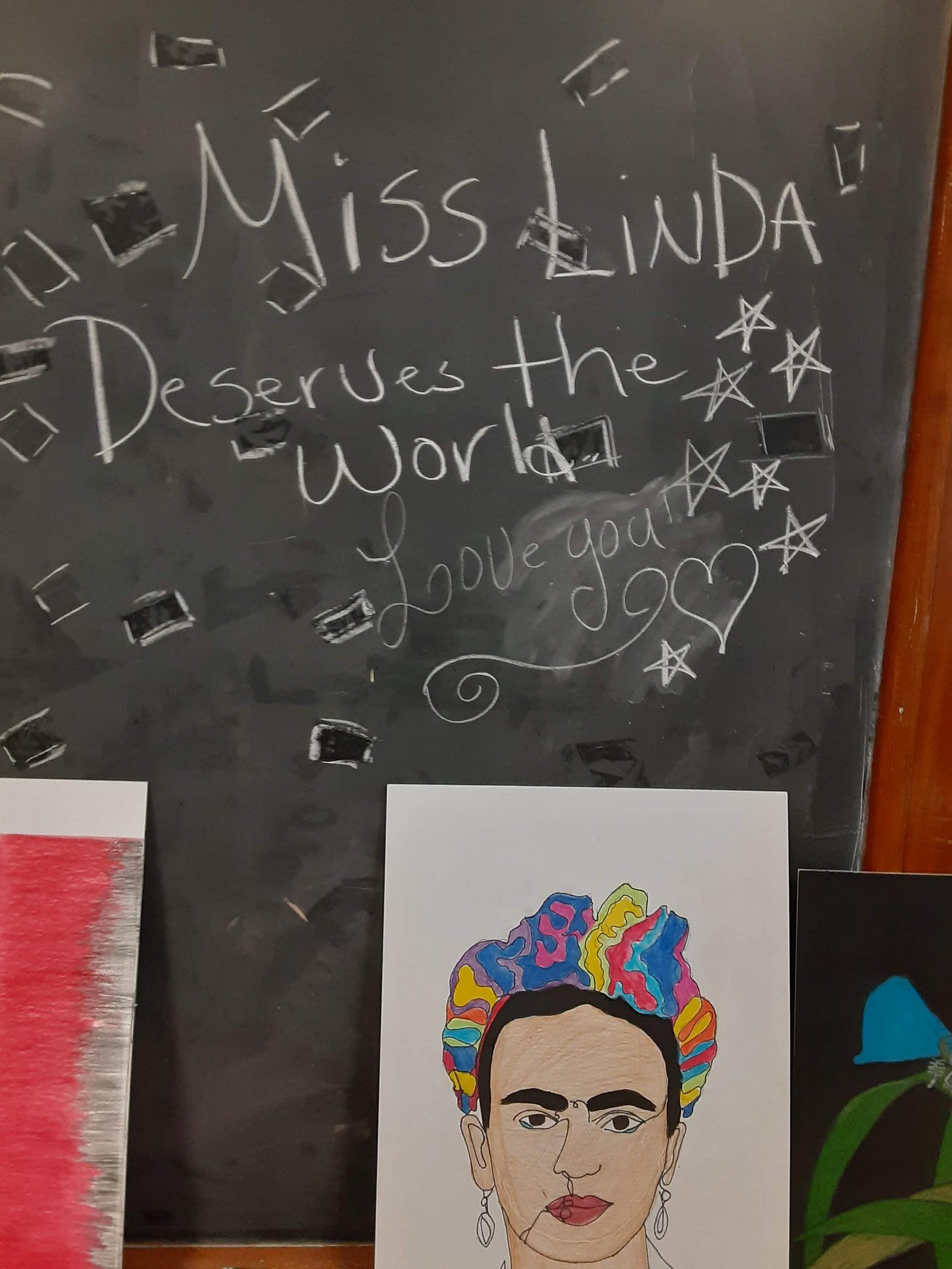
I wonder if chalkboard dust isn’t less toxic than whiteboard markers. Hopefully.
We went through a couple of smart board generations before I retired and now they’ve updated again. Remember the good old days of overhead projectors?